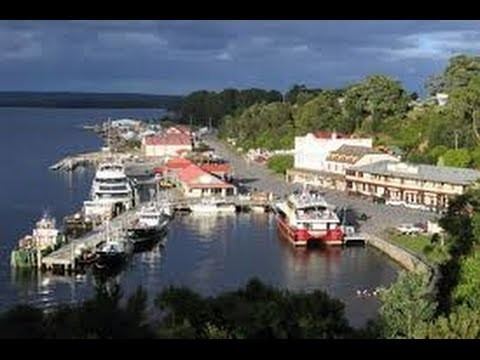Population 660 (2011 census) Postal code 7468 | Postcode(s) 7468 Elevation 20 m | |
 | ||
Weather 16°C, Wind N at 45 km/h, 91% Humidity Points of interest West Coast Wilderness Railway, Bonnet Island, Hells Gates, Franklin‑Gordon Wild Rivers National, Gordon River Cruises | ||
Strahan tasmania australia water plane mvi 0988
Strahan (pronounced "straw-n"), is a small town and former port on the west coast of Tasmania. It is now a significant locality for tourism in the region.
Contents
- Strahan tasmania australia water plane mvi 0988
- Map of Strahan TAS 7468 Australia
- World heritage cruises strahan tasmania 1
- Port
- Post offices
- Fishing and tourism
- Railway stopping place
- Climate
- References
Map of Strahan TAS 7468, Australia
Strahan Harbour and Risby Cove form part of the north-east end of Long Bay on the northern end of Macquarie Harbour. At the 2011 census, Strahan had a population of 660.
World heritage cruises strahan tasmania 1
Port
Originally developed as a port of access for the mining settlements in the area, the town was known as Long Bay or Regatta Point until 1877, when it was formally named after the colony’s Governor, Sir George Cumine Strahan.
Strahan was a vital location for the timber industry that existed around Macquarie Harbour.
For a substantial part of the nineteenth century and early twentieth century it also was port for regular shipping of passengers and cargo. The Strahan Marine Board was an important authority dealing with the issues of the port and Macquarie Harbour up until the end of the twentieth century when it was absorbed into the Hobart Marine Board.
Post offices
Macquarie Harbour Post Office opened on 16 May 1878, was renamed Strahan in 1881 and closed in 1891. East Strahan Post Office opened in 1891 and was renamed Strahan in 1893.
Fishing and tourism
Historically Strahan has been a port to a small fishing fleet that braves the west coast conditions and Hell's Gates. It is the nearest inhabited locality to Cape Sorell and is literally the 'gateway' to the south-west wilderness - as boats, planes and helicopters utilise Strahan as their base when travelling into the region.
The Huon Pine industry that utilised stands around the harbour and up the tributary rivers - including King River, the Franklin River and the Gordon River.
Strahan is the location of the only all weather commercial airport in Western Tasmania, Strahan Airport. Also located at the airport is the Automatic Weather Station, an important western Tasmania weather observation point.
Strahan is the base for boat trips to Sarah Island, the notorious penal settlement that garnered the reputation as the harshest penal settlement in the Australian colonies, and the lower Gordon River.
Strahan is an access point to the Franklin-Gordon Wild Rivers National Park, which was declared part of the Tasmanian Wilderness World Heritage Area in 1982. For several years Strahan became the focus of a conservation campaign opposed to the proposed Franklin-below-Gordon Dam.
It is the home of the Round Earth Theatre Company, which conducts explanatory tours of Sarah Island and also has produced a daily enactment/play about Sarah Island, The Ship That Never Was, which has exceeded 5000 performances and is Australia's longest running play.
Railway stopping place
Strahan was a stopping place on the former Strahan to Zeehan railway. It was also known as Strahan Wharf.
Strahan was connected with the former Mount Lyell Mining and Railway Company railway line that had a terminus at Regatta Point. The railway was government owned, and ran past the wharf at Strahan, and continued around the harbour before running north on its way to Zeehan. The formation of the railway line can be seen around the edge of the harbour.
The northern shore of Macquarie Harbour is across the bay from Regatta Point, the terminus of the recently reconstructed, West Coast Wilderness Railway.
Climate
Strahan has an oceanic climate (Cfb) with mild damp summers and cool, very rainy winters. Lying on Tasmania's West Coast, Strahan is frequently buffeted by low pressure systems from the Southern Ocean, causing heavy rain and gusty winds. Strahan is rather gloomy, receiving only 15.7 days of clear days annually.
Temperatures vary little between summer and winter, with minimums below 3 °C (37 °F) having been recorded in every month. Extreme heat is extremely rare, however heatwaves have occurred, most notably in 1982 and 2013. The highest recorded temperature is 38.6 °C (101.5 °F) on 14 February 1982, with the lowest recorded being −3.0 °C (26.6 °F) on 30 June 1983. Snow is rare, however falls frequently in the mountains just a few kilometers inland of Strahan.
